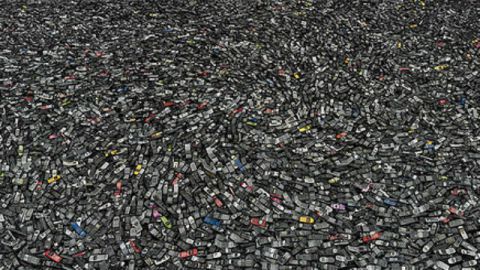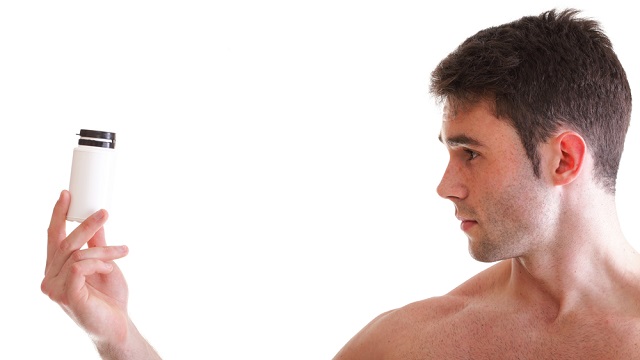Artist Chris Jordan on Beauty in the Plastic Crisis

Where were you when you first learned that there are plastic landfills the size of continents floating in our oceans? What should have been a wake-up call hasn’t slowed the disposable plastic consumption industry, which benefits a few corporations to the detriment of us all. The big idea presented here is that the arts have a role to play in helping us change the way we think about our poisonous conveniences.
Internationally renowned artist and photographer Chris Jordan has produced beautiful yet disturbing images showcasing American consumption. These include a photograph of dark swirls punctuated by a few bright colors that, on closer inspection, is a landfill of cell phones; a photograph of a colorful collage of millions of pieces of plastic pulled from the Pacific Ocean; and the iconic image of a great wave by Japanese artist Hokusai recreated to show the blue breaking crest raining down a confetti of plastic waste.
Jordan has been busy in recent years filming a powerful and poetic documentary that serves as a metaphor for how we need to rethink plastic, and stop it at its source. Midway Journey follows Jordan as he photographs albatrosses on a remote island in the middle of the Pacific, and shows us the intimate rituals of mothers cleaning and feeding their fuzzy albatross babies. The metaphor here extends beyond the symbolism of the albatross in Samuel Taylor Coleridge’s long poem The Rime of the Ancient Mariner—(a quote opens the trailer)—the chilling story of a sailor who inexplicably shoots down the friendly albatross that had sailed beside his ship, keeping it company; the sailor’s brutal act curses his crew and himself, setting them on a journey of horror. Our willful ignorance when it comes to American consumption is a lot like that.
But Jordan explains the metaphor further, with Lisa Bennett of the Center for Ecoliteracy:
Imagine if you and I were filmmakers, and we had a $100 million budget to make the most powerful film possible about pollution. Think about where would be the most profound, horrific, multilayered, metaphoric place of anywhere on Earth that our plastic could be showing up. What about inside the cutest, softest, gentlest, most vulnerable of all animals? It would have to be baby birds — trash inside the stomachs of baby birds. Oh my god, genius!!!
Where should that be happening? Staten Island? Kentucky? Where would the most symbolic possible place be? The most remote spot on the planet. So get a globe, and look and see: the Pacific is the biggest ocean. Put your finger in the middle of that ocean. How about a little island in the middle of the Pacific Ocean? Now what bird? It should be white, because white symbolizes peace and vulnerability. Then look through a list of what would be the most symbolic bird as “messenger.” Oh, the albatross, of course! Then the last thing: What should we name this island? Coconut Island? Coral Atoll? What would be most symbolic of where humans find ourselves now — between the collapse of the old and the new not yet emerging, making choices that affect life on Earth? How about “Midway”? What more provocative term could there possibly be?
Jordan’s work, as evident from his photographs and the Midway trailer, focuses the lens on the captivating experiences of witnessing the impact of pollution:
One powerful elixir is beauty. There is nothing quite like beauty. When you bring beauty and grief together, you can’t look at it, because it’s so sad — and you can’t look away, because it’s so beautiful. It’s a moment of being transfixed, and the key is turned in the lock.
The Midway film is set to be released at film festivals this fall. Already it has gained a massive following online, with nearly 90,000 “Likes” on Facebook. To support the film, donate to its post-production here.
A founding member of the Midway project and technologist, Manuel Maqueda, wrote an insightful essay on the plastic crisis and the growing movement to end it, which is a must-read. To find out simple ways to reduce your plastic footprint, visit the Plastic Pollution Coalition and My Plastic Free Life.
Image: “Cell phones #2,” Atlanta 2005. 44″ x 90.” From Intolerable Beauty: Portraits of American Mass Consumption.
Image Credit: CSlava.com (Flickr)





